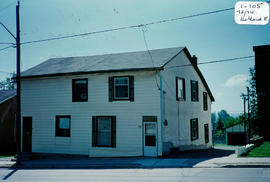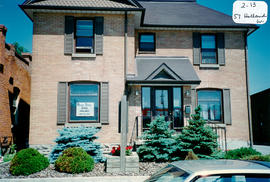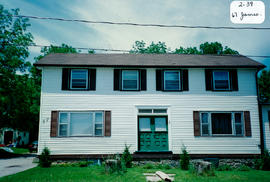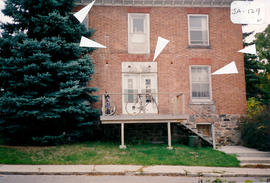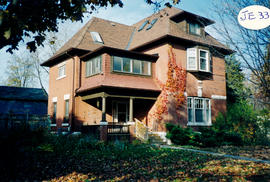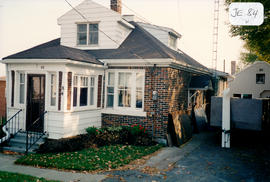- CA BWGPL GJ-HB-2017-03-22-08
- Pièce
- 1995
Fait partie de George Jackson fonds
The house located mid-block at 56 Hurd St. was built in the 1860-1880’s in the Gothic Revival style. The level of the sidewalk above the front yard suggests that this house was built before the street was paved or town services were installed. It was the home of the Gummerson family (before moving to 151 Church Street). Charlie Wilson and his family lived here in later years.
The 1½-storey, ‘L’-shaped house has an asymmetrical façade, a centre hall, and a medium-pitched, gable roof. The roof has an off-centre gable at the front façade projection. The Regency-style entrance has a flat, narrow transom with multiple lights and sidelights set into a rectangular opening. Wide, wood framing is topped with a shelf projection. The house has tall, narrow windows with high floor to ceiling heights. They are set into narrow, rectangular openings with plain, wood frames topped by shelf projections and plain, wood sills. A ground-floor bay window has a shallow hip roof supported on brackets. The 2/2 windows are the only original ones in the structure. Wood frame construction is covered with vinyl siding which replaces the original cove siding. The house has a parged, stone foundation. When the house was inventoried in 2000, a single fragment of ‘gingerbread’ was found hanging from one corner of the eaves. This suggests that more elaborate decoration was original to the house. (1, 3)
Sans titre



